When 99.9% just isn't good enough
Dr. Angela Speck (UTSA & AAS)
When it comes to total solar eclipses, 99% is not enough. Even 99.9% isn't enough. Let me explain...
The Sun has a faint atmosphere known as the corona. It is always present, but with the light from the Sun's main disk being so bright, we just do not see this faint atmosphere. For context, the corona is about as bright as the full Moon. The uneclipsed Sun is one hundred-thousand (100,000) to a million (1,000,000) times brighter.
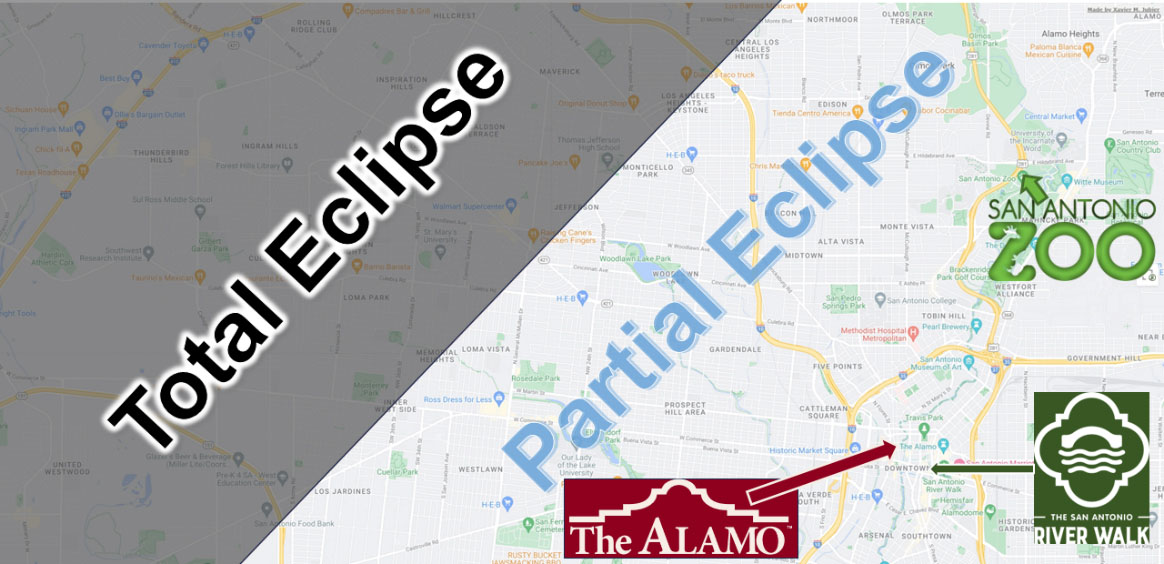
Imagine you are in a dark room looking at your phone and the brightness is low, but you can see everything just fine. Then you walk outside into bright sunlight, your phone's screen brightness must increase too for you to see anything, and even then, it's hard to see things on the screen. If, like me, you disable the automatic screen brightness adjustment – then you cannot see anything until you adjust the screen brightness up.
With the corona being so much fainter than the main disk of the Sun, we have a similar effect. Consider that when 99% of the Sun is eclipsed, there is still 1% of the Sun showing, but the Sun is 100,000 times brighter than the corona, so even that sliver of Sun is at least 1000 times brighter than the corona. Similarly, if the Sun is at 99.9% partial eclipse, there is still 1/1000 (one thousandth) of the Sun visible, and that is just too much light to experience the glory of a total eclipse.
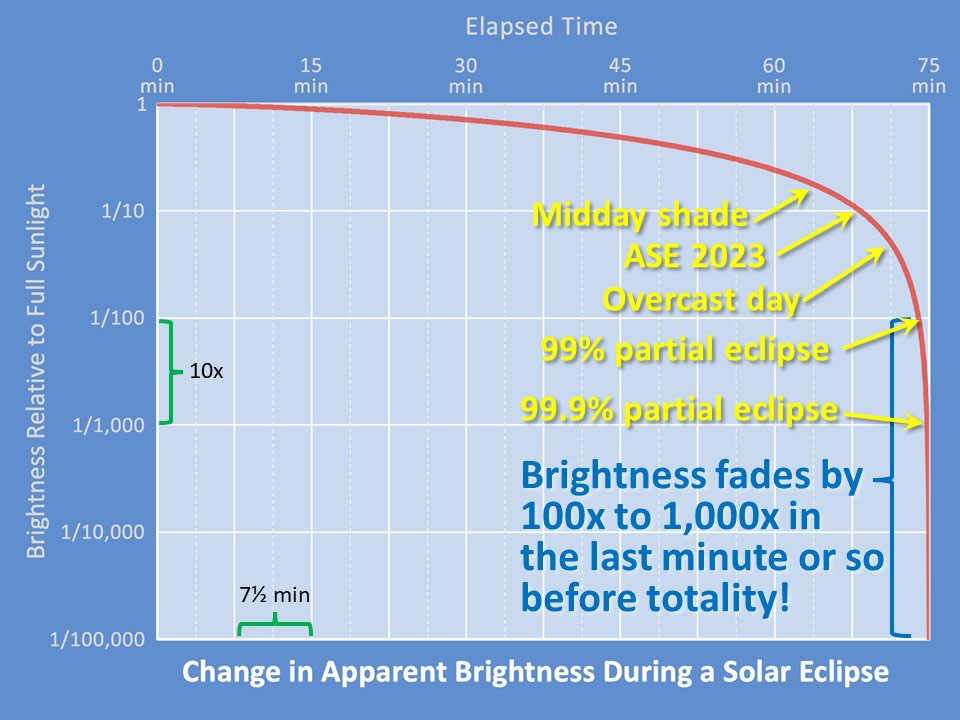
As shown in the graph, on the way to totality, we experience all phases of partial eclipse. As the Sun is progressively blocked out, we start out having our pupils dilate, so we do not perceive a chance in darkness. About 1 hour into the partial eclipse, we start to notice the light change and it is about as dark as shade at midday. By about 70 minutes into the eclipse the sky is only as dark as an overcast day. In the next couple of minutes, we drop to 99% eclipses, 1% brightness, and then quickly to 1/1000 brightness. The drop from 99% to 100% happens in about 1 minute, much faster than sunset to nighttime. However, if you are outside the path of totality (even at 99.9% partial eclipse), it will NOT get dark.
Outside the path of totality, even at 99.9% partial eclipse, there is:
- Little to no temperature & wind changes
- Little to no behavioral changes
- Little to no shadow bands
- No dramatic brightness changes
- No Baily's beads [figure 1]
- No diamond ring effects [figure 2]
- No chromosphere & prominences [figure 3]
- No corona (the main attraction!) [figure 3]
- No sunset colors around horizon
- No bright stars and planets
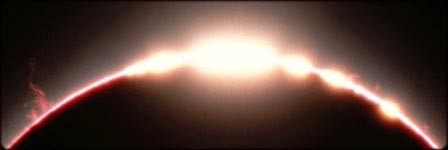
[figure 1]
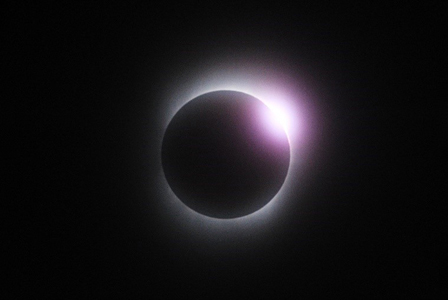
[figure 2]
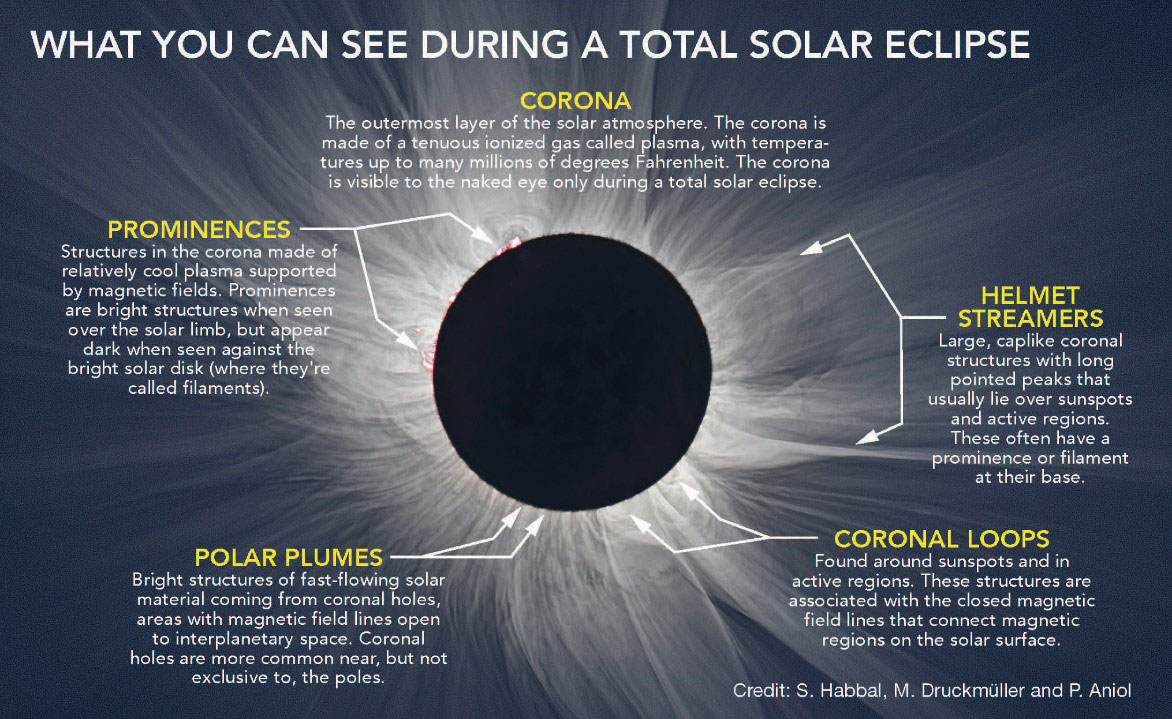
[figure 3]
To experience the sudden plunge into deep twilight, the sudden return of daylight a few minutes later, and all the other awesome wonders of a total solar eclipse, you must get yourself into the path of totality!

